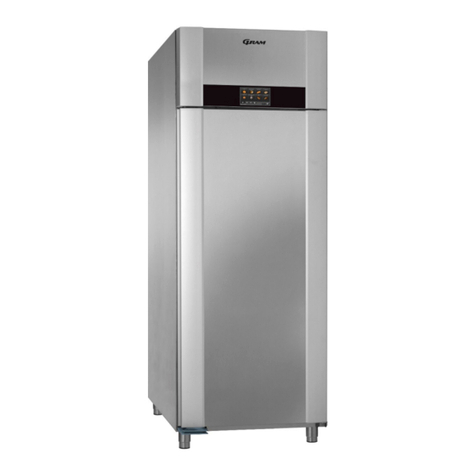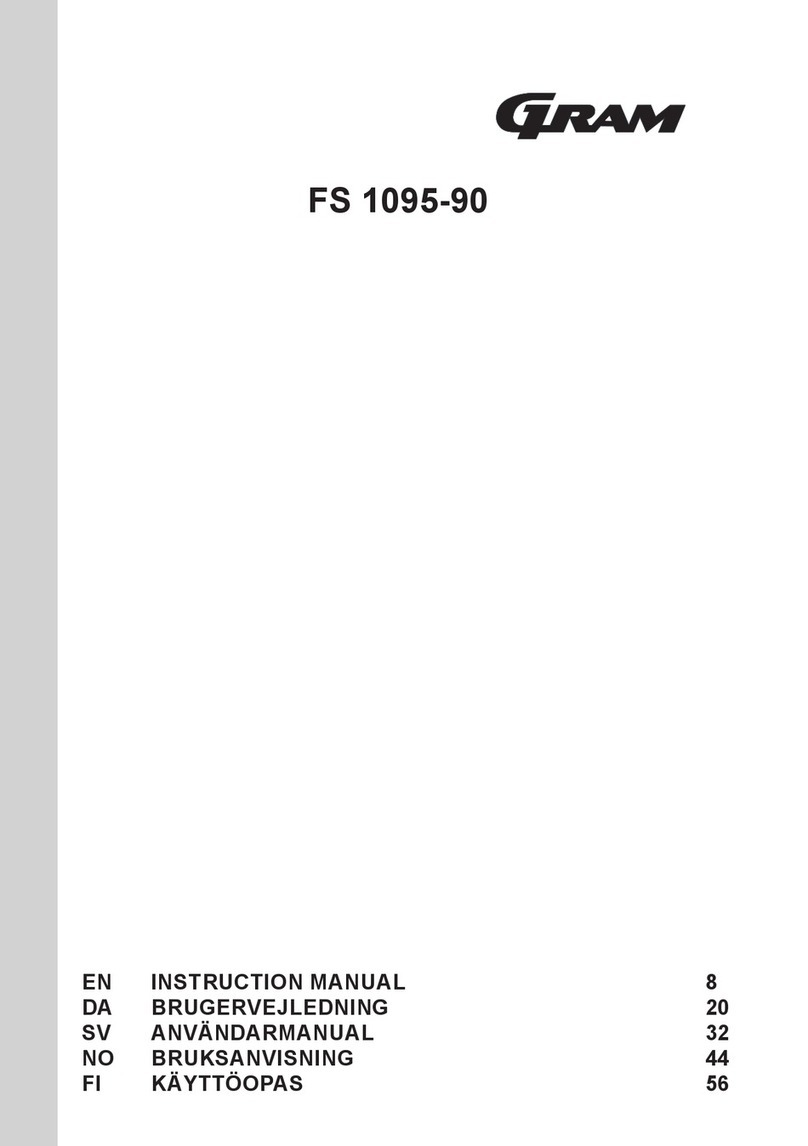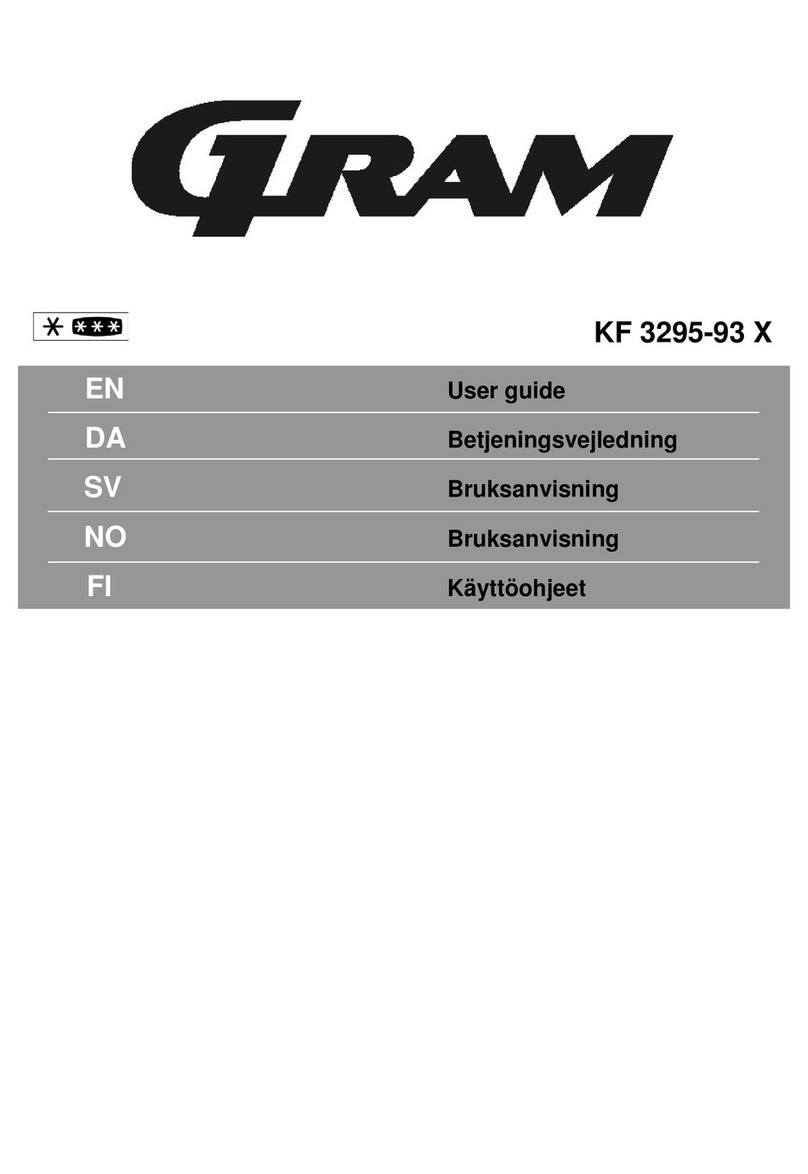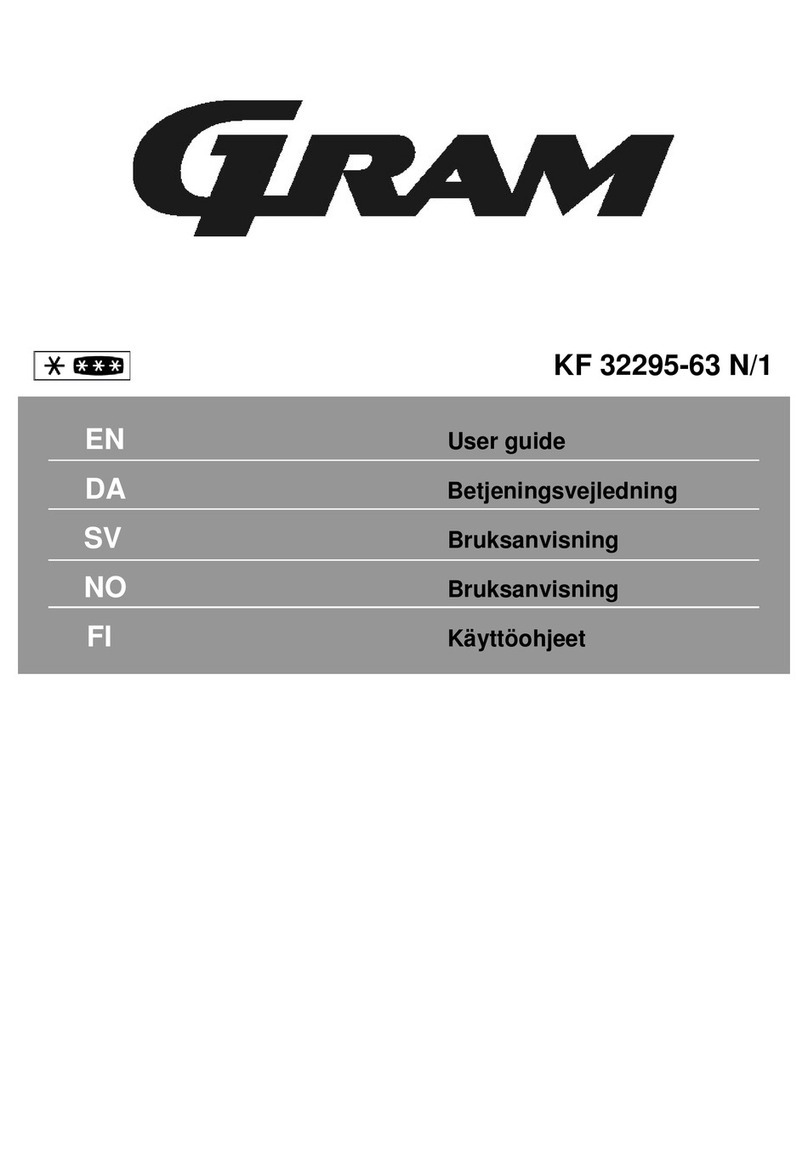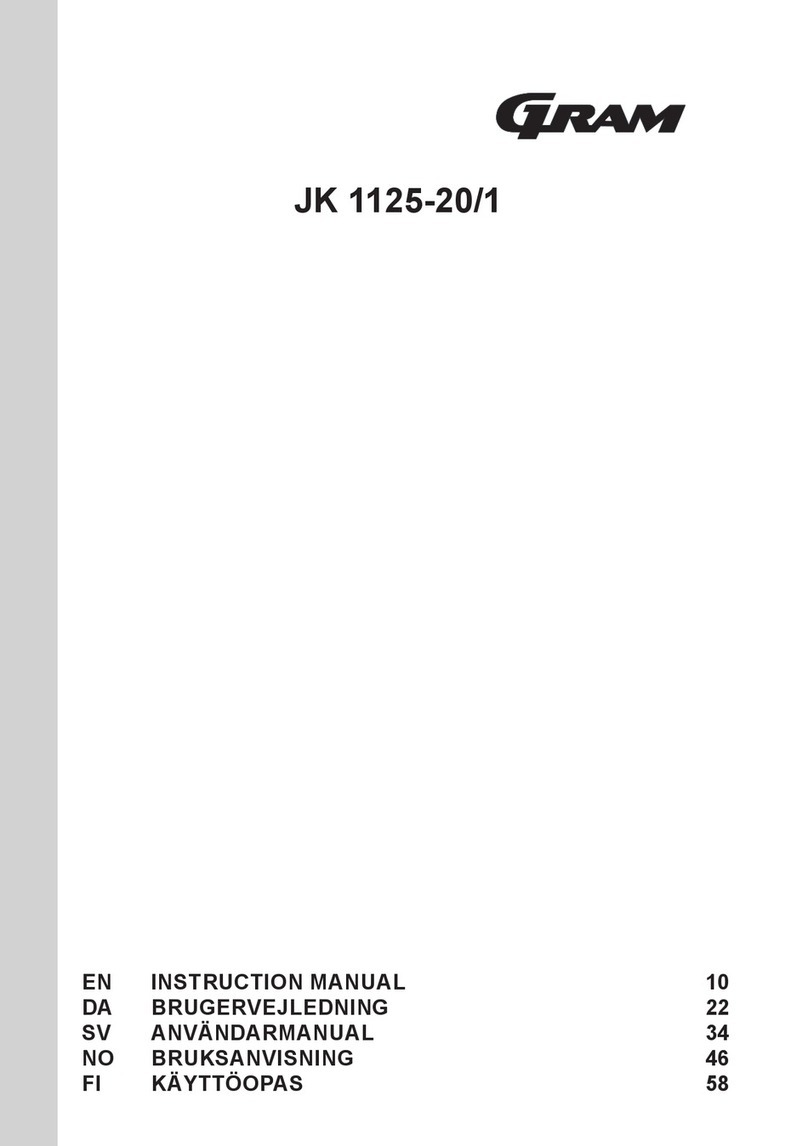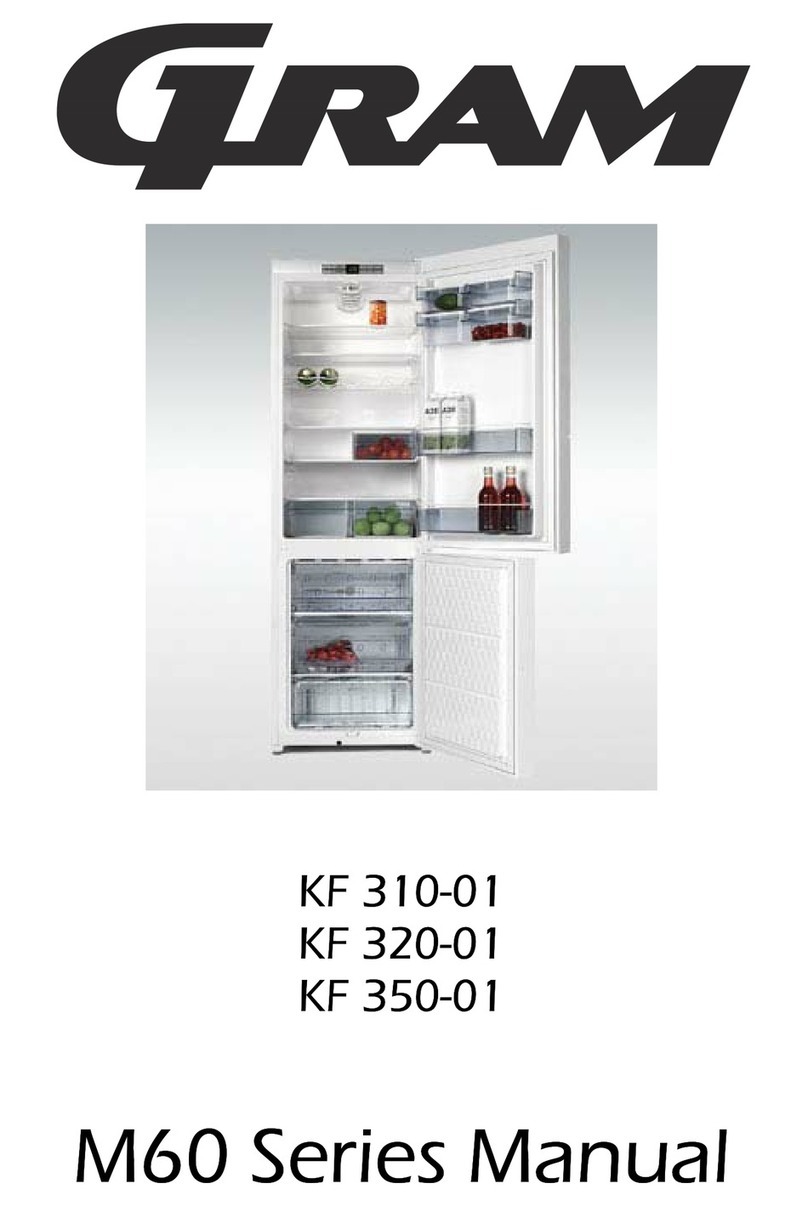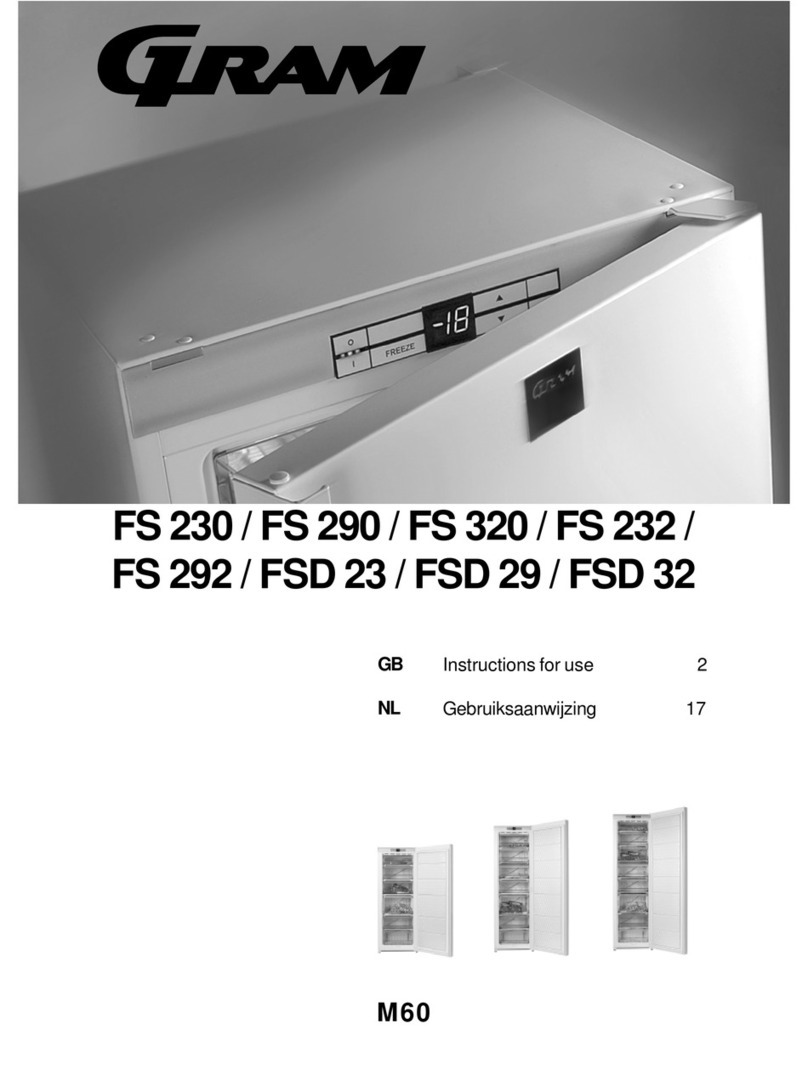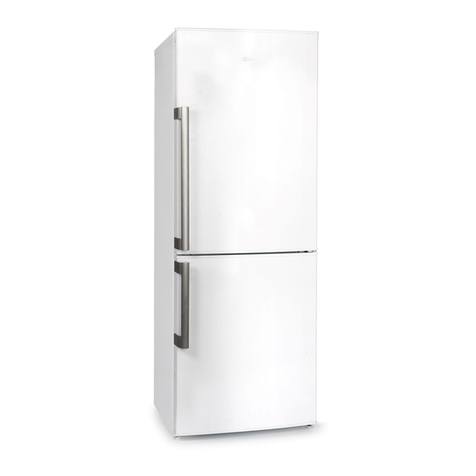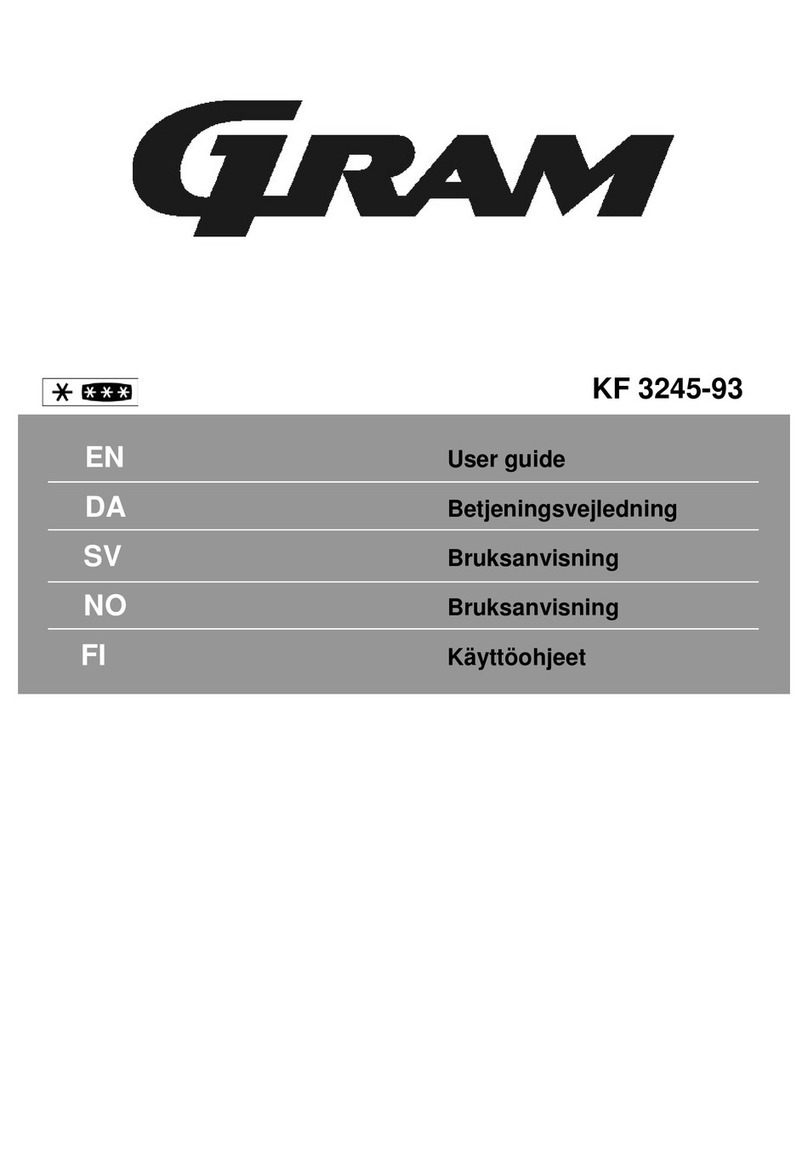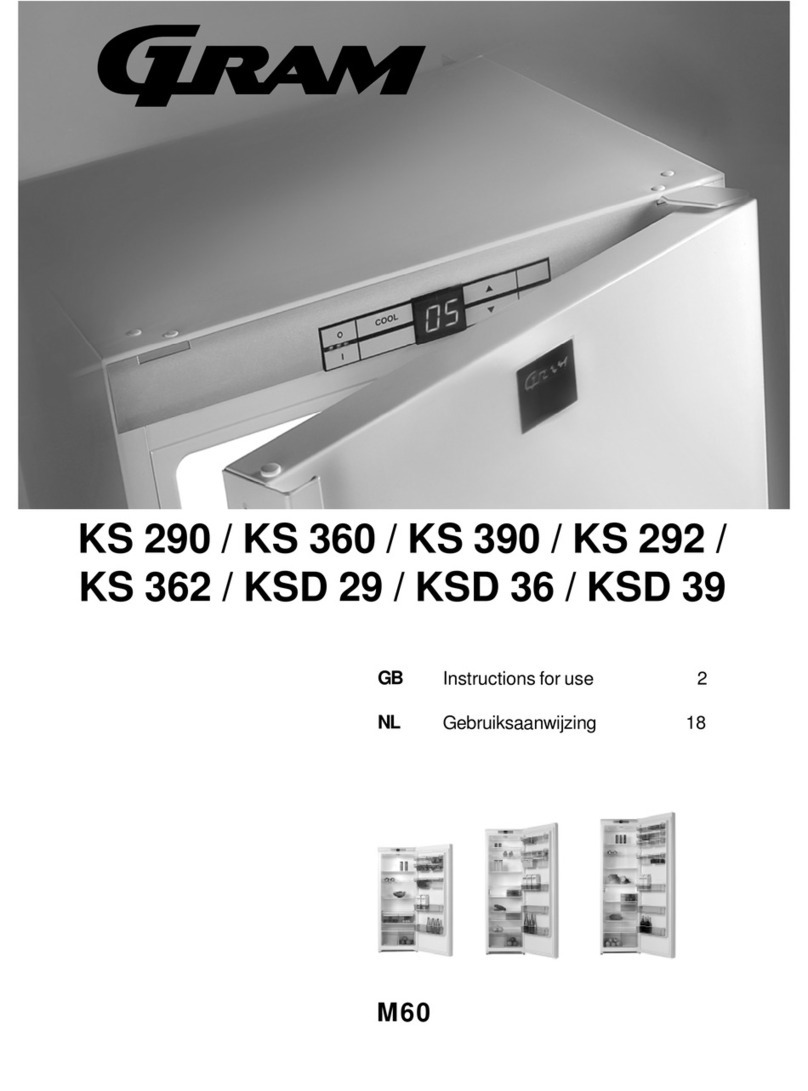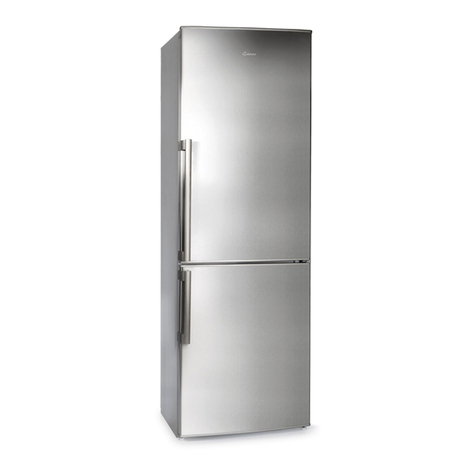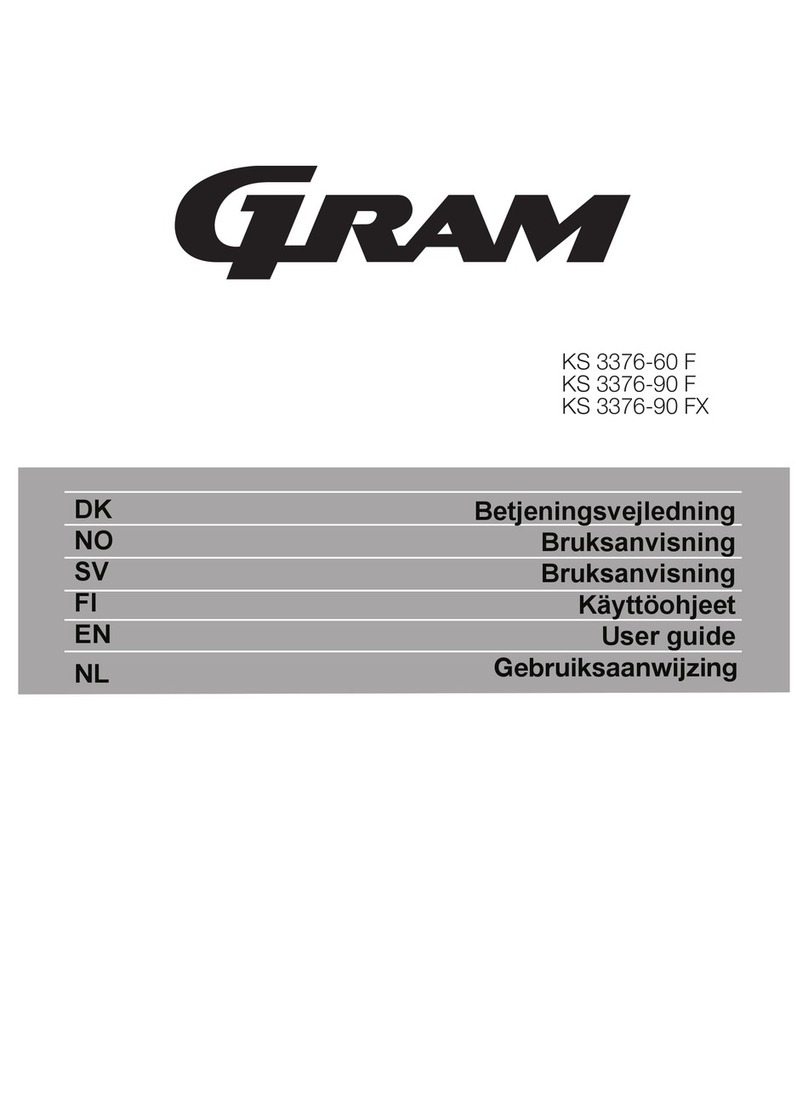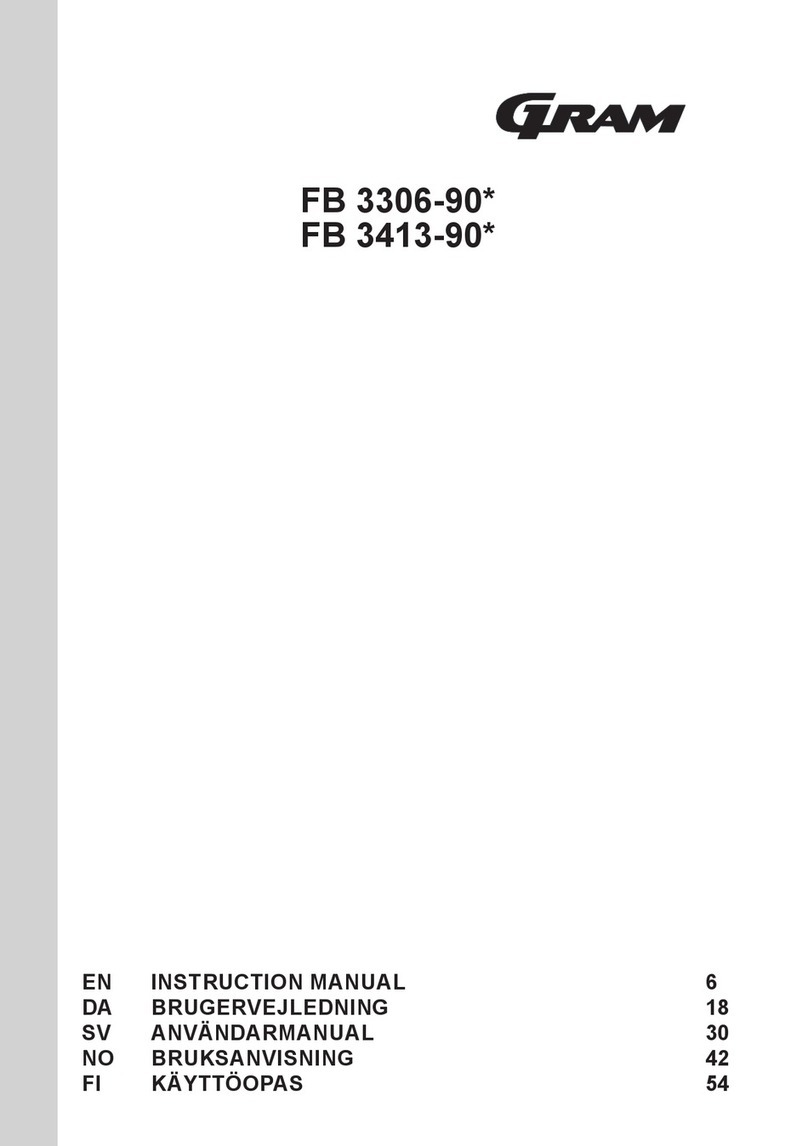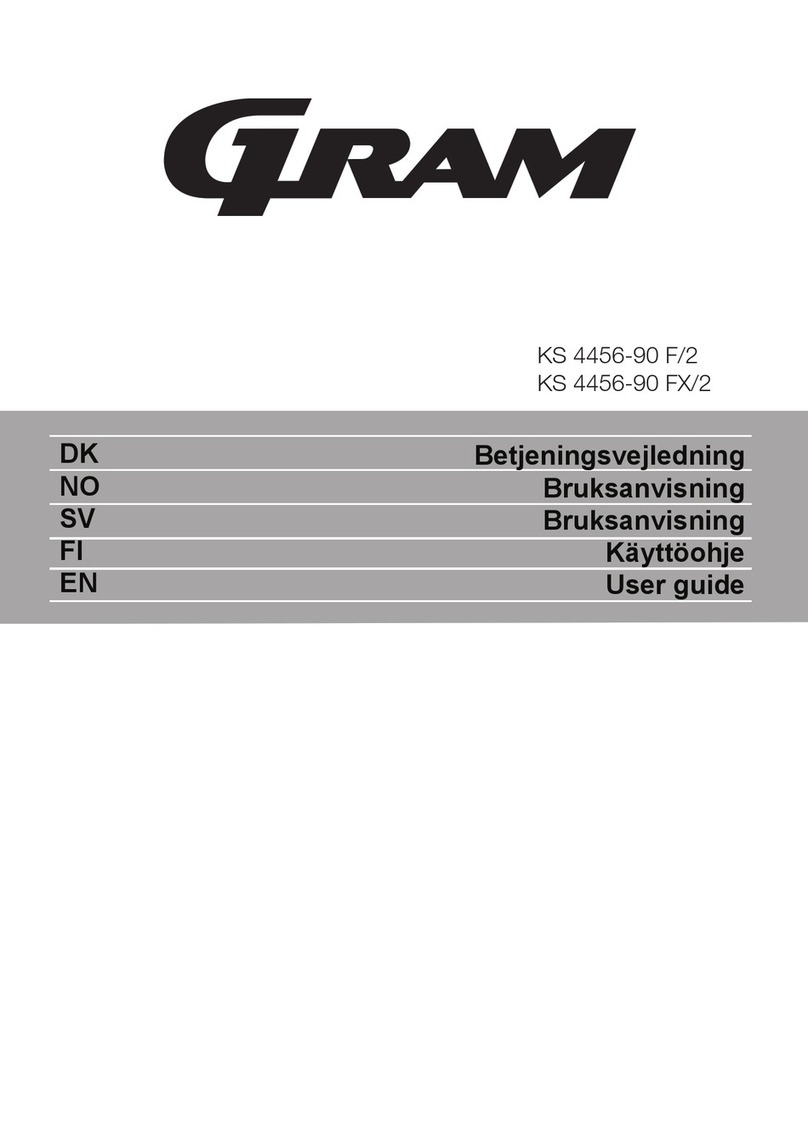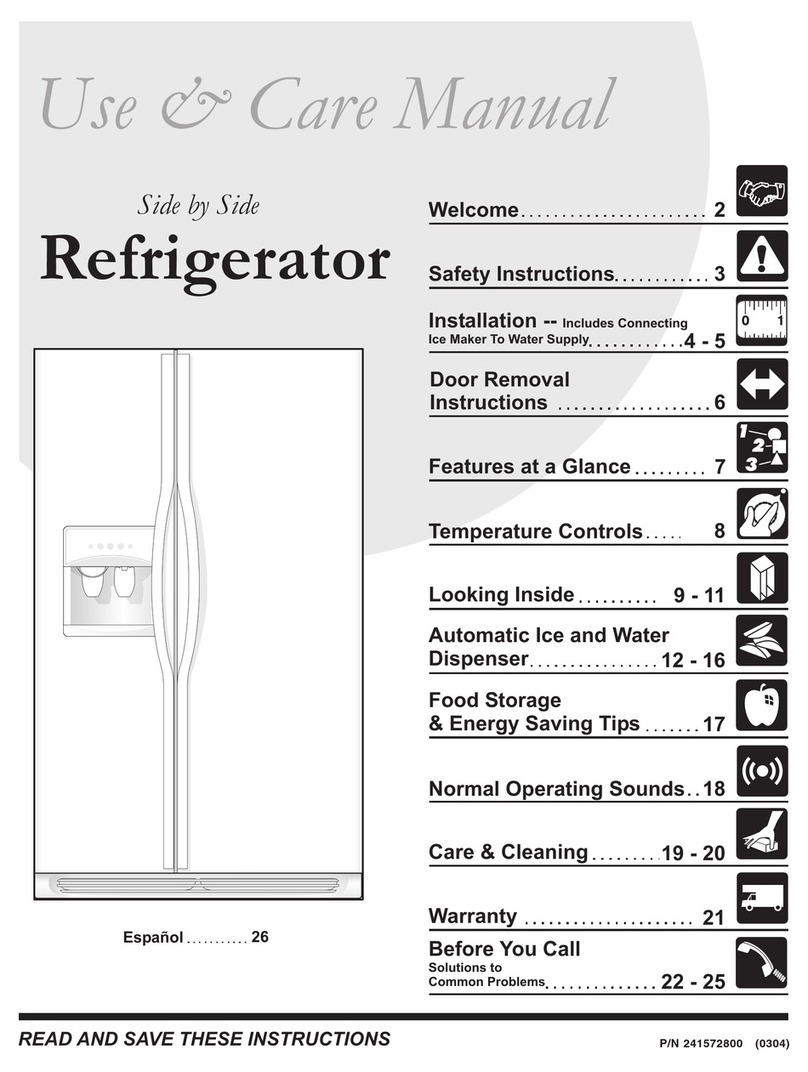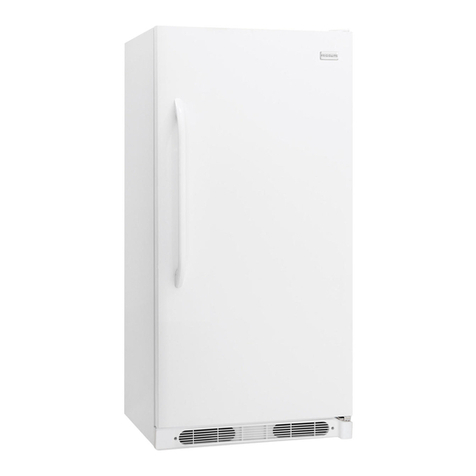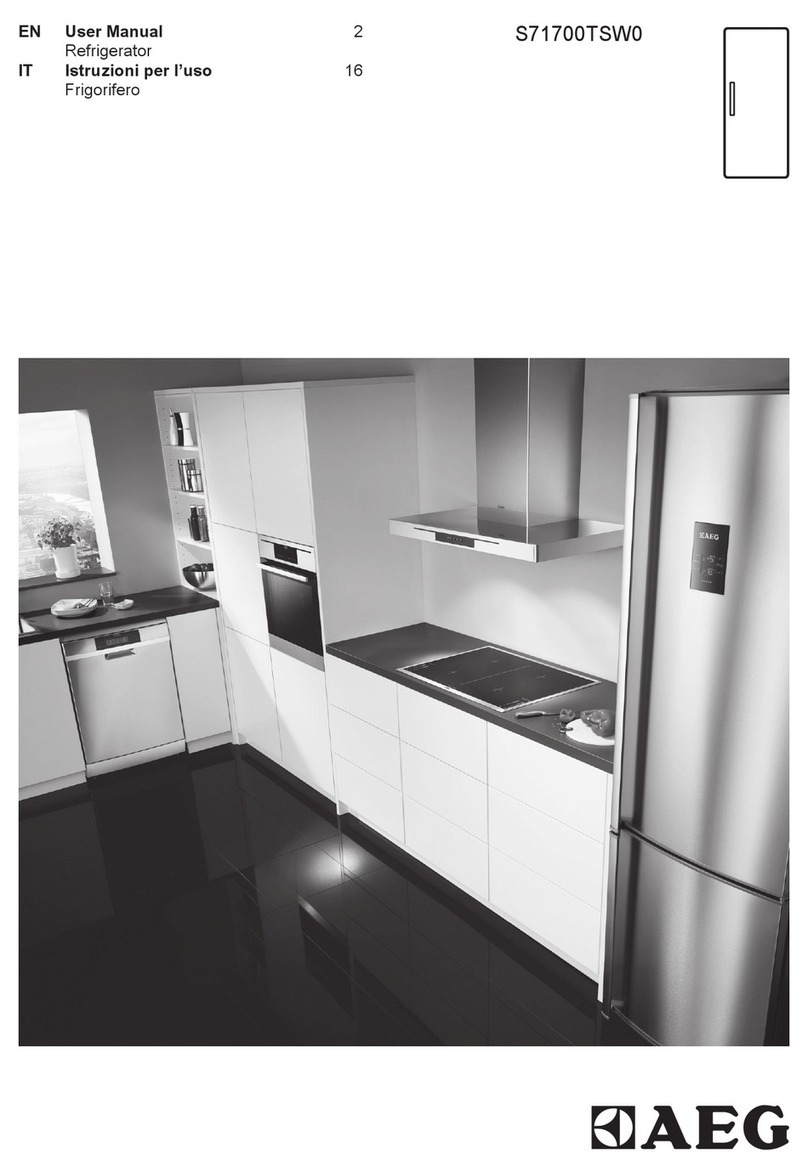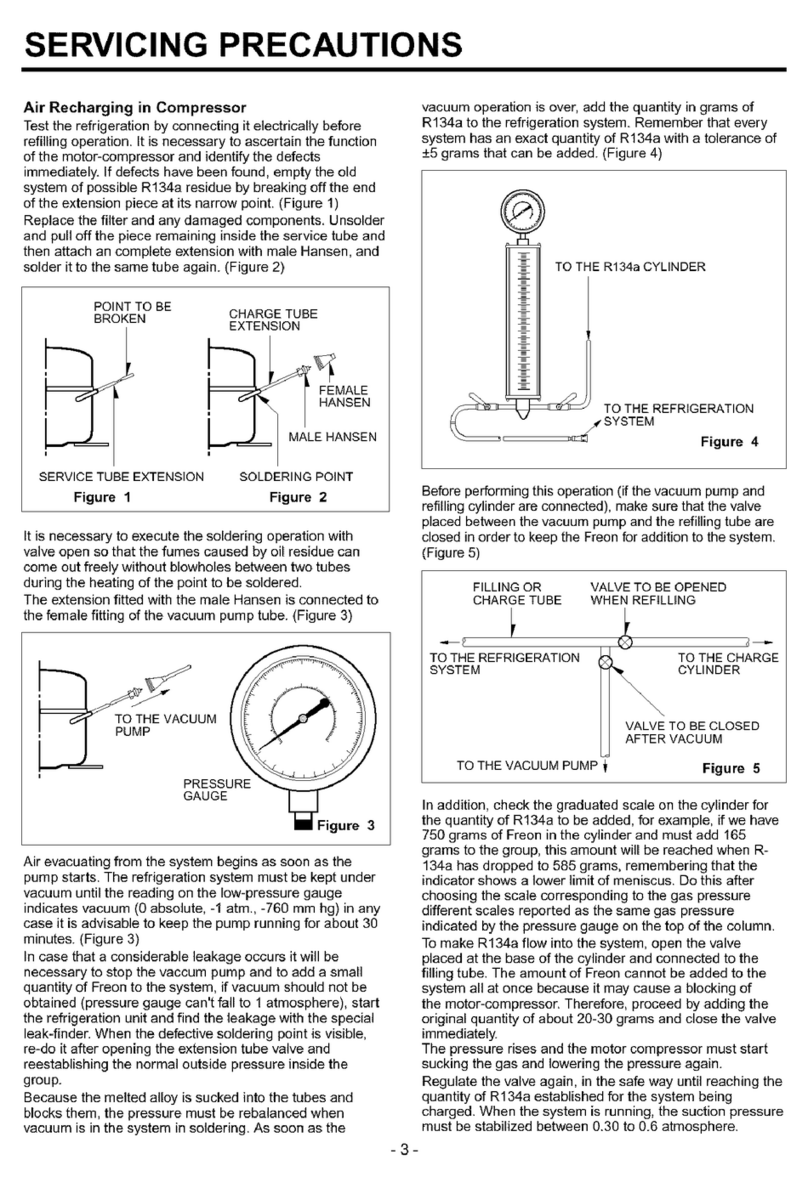
Temperature control and adjustment
Operating temperatures are controlled by the
setting knob and may be set at any position
between 1 and 5 (the coldest position).
The average temperature inside the fridge
should be around +5 degrees C (+41degrees
F).
Therefore adjust the setting knob to obtain the
desired temperature. Some sections of the
fridge may be cooler or warmer (such as
vegetable drawer and top part of the cabinet)
which is quite normal.
We recommend that you check the temperature
with an accurate thermometer to ensure that the
storage compartments are kept to the desired
temperature.
Please remember each time the door is opened
cold air escapes and the internal temperature
rises. Therefore never leave the door open and
ensure it is closed immediately after food is put
in or removed.
Before operating
Before you start using the appliance check
that:
1. The feet have been adjusted for perfect
levelling.
2. The interior is dry and that air can circulate
freely at the back of the appliance.
3. The interior is clean as recommended
under "Cleaning and care.”
4. The plug has been inserted into the wall
socket and the electricity is switched on.
Avoid unintentional disconnection by placing
sticky tape on the switch.
And note that:
5. You will hear a noise as the compressor
starts. The liquid and gases sealed within the
refrigeration system may also make some
noise, whether the compressor is running or
not. This is quite normal.
6. The top of the cabinet may be slightly
currugated which is quite normal due to the
manufacturing process used; it is not a defect.
7. We recommend setting the knob midway
and monitor the temperature to ensure the
appliance maintains desired storage
temperatures (see the "Temperature control
and adjustement" section).
8. Do not load the appliance immediately it is
switched on. Wait until the correct storage
temperature has been reached. We
recommend checking the temperature with an
accurate thermometer (see the "Temperature
control and adjustement" section).
Storing frozen food
Your freezer is suitable for the long-term
storage of commercially frozen foods and also
can be used to freeze and store fresh food.
If there is an electrical cut, do not open the
door. Frozen foo
d should not be affected if the
electrical cut lasts for less than 18 hrs. If the
electrical cut lasts longer, then the food
should be checked and either eaten
immediately or cooked and then re-frozen.
Freezing fresh food
Please observe the following instructions to
obtain the best results.
Do not freeze too large a quantity at any one
time. The quality of the food is best preserved
when it is frozen right through to the core as
quickly as possible.
Do not exceed the freezing capacity of your
appliance in 24 h.
Placing warm food into the freezer
compartment causes the refrigeration
machine to operate continously until the food
is frozen solid. This can temporarily lead to
excessive cooling of the refrigeration
compartment.
When freezing fresh food, keep the
thermostat control at medium position. Small
quantities of food up to 1/2 kg (1 lb) can be
frozen without adjusting the thermostat
control.
Take special care not to mix already frozen
food and fresh food.
4
User guide

